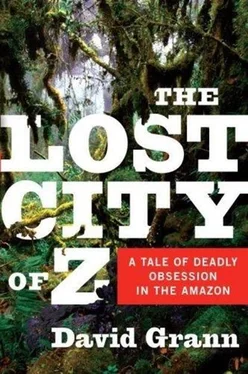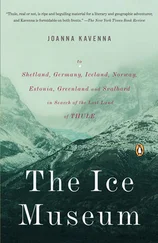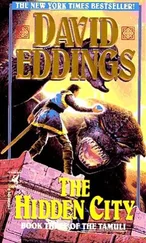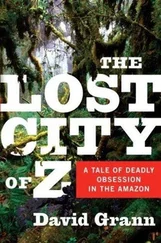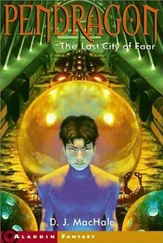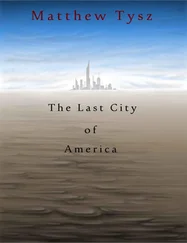The Iguatemi crept along the river, moving so slowly that once even a canoe shot past it. The boys wanted to exercise, but there was no room on board, and all they could do was stare at the unending swamps. “Cuyaba will seem like Heaven after this!” Jack wrote his mother. Two days later he added, “Daddy says this is the dullest, most boring river journey he has ever made.”
On March 3, eight days after leaving Corumbá, the Iguatemi drifted into Cuiabá, which Raleigh called “a God forsaken hole… best seen with the eyes closed!”
Fawcett wrote that they had reached the “stepping off point” into the jungle and were waiting several weeks for the rainy season to let up for “the attainment of the great purpose.” Although Fawcett hated to linger, he didn't dare leave before the dry season had arrived, as he had done disastrously in 1920 with Holt. And there were still things to do-provisions to be collected and maps to be pored over. Jack and Raleigh tried to break in their new boots by trekking through the surrounding bush. “Raleigh's feet are covered with patches of Johnson's plaster, but he is keener than ever now [that] we are nearing the day of departure,” Jack said. They carried their rifles and set up target practice, shooting at objects as if they were jaguars or monkeys. Fawcett had warned them to conserve ammunition, yet they were so excited that they spent twenty cartridges on their first attempt. “[What] a hell of a row!” Jack exclaimed of the noise.
Raleigh boasted that he was a fine shot-“even if I do say so myself.”
During meals, the young men consumed additional portions. Jack even broke his vegetarian edict, eating chicken and beef. “We are feeding up now,” he told his mother, “and I hope to put on ten pounds before leaving, as we need extra flesh to carry us over hungry periods during the expedition.”
An American missionary who was staying in Cuiabá had several issues of Cosmopolitan, the popular monthly magazine owned by William Randolph Hearst. Raleigh and Jack swapped some of their books for them, which evoked a world the young men knew they would not see for at least two years. Issues from that period had advertisements for twelve-cent cans of Campbell's Tomato Soup and for the American Telephone & Telegraph Company (“Instead of speech through a partition, there is speech across a continent”), and such reminders of home seemed to make Raleigh “sentimental,” as he put it. The magazines also contained several gripping adventure tales, including “The Thrill of Facing Eternity,” in which the narrator asked, “What do I know about fear? What do I know about courage?… Until actually faced with a crisis no man knows how he will behave.”
Rather than confronting their own reservoirs of courage, Jack and Raleigh seemed to prefer to dwell on what they would do after they returned from the expedition. They were sure that the journey would make them rich and famous, but their fantasies remained more those of boys than of men. “We intend to buy motor-cycles and really enjoy a good holiday in Devon, looking up all our friends and visiting the old haunts,” Jack said.
One morning they went with Fawcett to purchase pack animals from a local rancher. Though Fawcett complained that he was “cheated” over everything, he acquired four horses and eight donkeys. “The horses being fairly good, but the mules very ‘fraco' (weak),” Jack said in a letter home, showing off his newest Portuguese word. Jack and Raleigh immediately gave the animals names: an obstinate mule was Gertrude; another, with a bullet-shaped head, was Dumdum; and a third, forlorn-looking animal was Sorehead. Fawcett also obtained a pair of hunting dogs that were, as he put it, “rejoicing in the names of Pastor and Chulim.”
By then, nearly everyone in the remote capital had heard of the famous Englishmen. Some inhabitants regaled Fawcett with legends of hidden cities. One man said that he had recently brought an Indian from the jungle who, upon seeing the churches in Cuiabá, remarked, “This is nothing, in my forest are buildings bigger and loftier by far than this. They have doors and windows of stone. The inside is lit by a great square crystal on a pillar. It shines so brightly as to dazzle the eyes.”
Fawcett was grateful for any visions, however preposterous, that might confirm his own. “I have seen no reason to budge a hair's breadth” from the theory of Z, he wrote Nina.
AROUND THIS TIME, Fawcett heard the first news of Dr. Rice's expedition. For several weeks, there had been no reports of the party, which had been exploring a tributary of the Rio Branco, about twelve hundred miles north of Cuiabá. Many feared that the men had vanished. Then an amateur radio operator in Caterham, England, picked up on his wireless receiver Morse signals coming from deep in the Amazon. The operator jotted down the message:
Progress slow, owing to extremely difficult physical conditions. Personnel expedition numbers over fifty. Unable use hydroplane at present due low water, objects expedition being attained. All well. This message sent by expedition's own wireless. Rice.
Another message reported that Dr. Theodor Koch-Grünberg, the noted anthropologist with the party, had contracted malarial fever and had died. Dr. Rice announced on the wireless that he was about to deploy the hydroplane, although it had to be swept clean of ants and termites and spi-derwebs, which covered the control panel and cockpit like volcanic ash.
The men worried what would happen if they had to land in an emergency. Albert William Stevens, a noted balloonist and the expedition's aerial photographer, told the RGS, “If not over a waterway, parachuting would be advisable before the plane crashed in the massive trees of the forest; the only hope of the flyers would then be to find the wreck of their craft, and secure food. With machete and compass, they could perhaps cut their way to the nearest river, build a raft, and escape. A broken arm or leg would mean certain death, of course.”
Finally, the men filled the tank with fuel-enough for about four hours-and three members of the expedition boarded the plane; the pilot started the propeller, and the machine roared down the river, hurtling into the sky. Stevens described the explorers' first vision of the jungle from five thousand feet up:
The palms below, scattered through the forest, looked like hundreds of star-fish at the bottom of an ocean… Except for the spirals, blankets, and clouds of mist-like emanations ascending from numerous hidden streams of water, there was nothing in sight but the sombre, seemingly endless forest, premonitory in its silence and vastness.
Usually, the pilot and one other member of the party would fly for about three hours each morning, before the rising temperature outside might cause the engine to overheat. Over several weeks, Dr. Rice and his team surveyed thousands of square miles of the Amazon-an amount inconceivable on foot or even by boat. The men discovered, among other things, that the Parima and the Orinoco rivers did not, as had been suspected, share the same source.
Once, the pilot thought he saw something moving between the trees and dived toward the canopy. There was a cluster of “white” Yanomami Indians. When the plane landed, Dr. Rice tried to establish contact, offering the Indians beads and handkerchiefs; unlike on his previous expedition, the tribesmen accepted his overtures. After spending several hours with the tribe, Dr. Rice and his party began leaving the jungle. The RGS asked the Caterham operator to convey “the congratulations and good wishes of the Society.”
The expedition, despite the unfortunate death of Koch-Grünberg, was a historic achievement. In addition to the cartographic discoveries, it had shifted the human vantage point in the Amazon from below the canopy to above, tilting the balance of power that had always favored the jungle over its trespassers. “Those regions where the natives are so hostile or the physical obstacles so great as to effectually bar” entering on foot, Dr. Rice declared, “the airplane passes over easily and quickly.” Moreover, the wireless radio had allowed him to keep in contact with the outside world. (“The Brazilian jungle has ceased to be lonely,” the New York Times proclaimed.) The RGS hailed in a bulletin the first-ever “communication by radio to the Society from an expedition in the field.” At the same time, the Society recognized, wistfully, that a Rubicon had been crossed: “Whether it is an advantage to take off the glamour of an expedition into the unknown by reporting daily is a matter on which opinions will differ.” Owing to the huge cost of the equipment, the bulkiness of radios, and the lack of safe landing places in most regions of the Amazon, Dr. Rice's methods would not be widely adopted for at least another decade, but he had shown the way.
Читать дальше
Конец ознакомительного отрывка
Купить книгу
